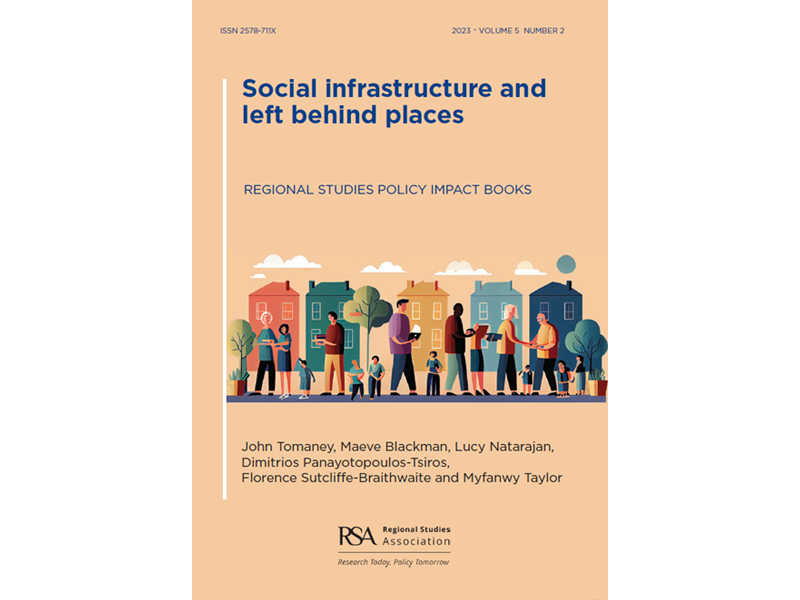Introduction
In the ever-evolving landscape of regional studies, the 10th Regional Studies Policy Impact Book, “Social Infrastructure and Left Behind Places,” has officially debuted online. Authored by a team of distinguished scholars, including Professor John Tomaney (Chair of Trustees at Redhills), Maeve Minns, Lucy Natarajan, Dimitrios Panayotopoulos-Tsiros, Florence Sutcliffe-Braithwaite, and Myfanwy Taylor, this seminal work delves into the critical intersections of social infrastructure and the challenges faced by neglected regions.
The book consolidates and deepens work on social infrastructure based on the authors’ study of the former mining village of Sacriston in County Durham. The work was conducted with Redhills and supported by UCL Grand Challenges. The book looks at the making, unmaking and remaking of social infrastructure and sets out policy recommendations to ensure its survival and development.
The Launch
The book’s online publication marks a significant milestone, opening its wealth of insights to a global audience. Its launch is a testament to the collaborative efforts of the authors and the Regional Studies Association (RSA), which has been at the forefront of fostering impactful research in the realm of regional studies.
The Essence of ‘Social Infrastructure and Left Behind Places’
The heart of this publication lies in its exploration of social infrastructure and its profound impact on regions that have been traditionally marginalised or overlooked. The authors engage with the concept of ‘left behind places’, examining the various facets contributing to their socio-economic challenges. From access to healthcare and education to the development of community spaces, the book presents a comprehensive analysis of the interconnected elements that shape the destiny of these regions.
Key Themes Explored
- Community Resilience: The book investigates how social infrastructure can act as a catalyst for building community resilience. By analysing case studies and real-world examples, the authors shed light on the transformative power of strong social bonds and well-developed community networks.
- Policy Implications: Through a rigorous examination of policy frameworks, the authors provide valuable insights into how policymakers can address the unique challenges left behind places face. The book serves as a guide for crafting effective policies that promote inclusive development.
- Spatial Inequality: “Social Infrastructure and Left Behind Places” confronts spatial inequality head-on. The authors scrutinise the spatial dimensions of social infrastructure, emphasizing the need for equitable distribution and access to resources across regions.
- Global Relevance: While rooted in specific regional contexts, the book transcends geographical boundaries. Its findings have implications for researchers, policymakers, and practitioners worldwide, providing a global perspective on the intricate relationship between social infrastructure and regional development.
Accessing the Book
For those eager to delve into the rich content of this impactful book, it is now available online on the Regional Studies Association’s website [link: https://www.regionalstudies.org/news/new-policy-expo-book-published-social-infrastructure-and-left-behind-places/]. Readers can explore the digital version and benefit from the convenience of online accessibility.
Conclusion
‘Social Infrastructure and Left Behind Places’ stands as a beacon in regional studies, offering a nuanced understanding of the challenges neglected regions face and the pivotal role social infrastructure plays in shaping their future. As the 10th Regional Studies Policy Impact Book, this publication adds a significant chapter to the ongoing discourse on regional development, beckoning researchers and policymakers to engage with its thought-provoking insights. Featured in The Guardian on 12th January.

